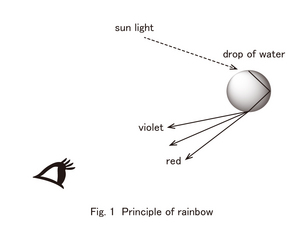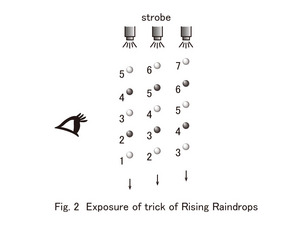Nagoya City Science Museum
TOP > Exhibition Guide > Keyword Search > Starting with "W" > water > Cloud and Raindrops
Cloud and Raindrops



Purpose of Exhibition
Water on the ground evaporates and turns into vapor. It soars upwards and makes clouds in the sky. Over time clouds are transformed into rain (water), which returns to the ground and pours into the ocean. Water circulates on the earth. In this "Exploring Water" exhibition, you can deepen your knowledge about this big circulation and characteristics of water through various experiments.
We will explain three exhibits in this "Cloud Stage". You can watch experiments and arrangements to understand further about the small drops of water that compose clouds and become rain after growing up.
Additional Knowledge
[Cloud Particles and Raindrops]
Clouds are drops of water or small ice particles that gather and float in the atmosphere in a cluster. Then, they grow bigger and become raindrops. This exhibition shows how big they are.
The particles that make clouds are made of tiny particles of dust or dirt (called aerosol) as core particles. Therefore, when there are a lot of aerosols, water vapor tends to solidify easily and through this process, clouds are likely to occur. At this time, cloud particles are very small with a size of about 0.001 to 0.01 mm. The cloud particles gradually grow because of collision among clouds particles, and they further solidify. They grow up to a size of 0.2mm.They grow more and become rain drops, with a diameter of around 1mm. When those raindrops are compared with the original cloud particles, you can see that their size is 100 to 1000 times bigger.
[Water Prism]
The glass of triangular prism which separates white light into 7 colors: red, orange, yellow, yellow-green, green, blue and violet, is called a prism. It is understood that white light is a gathering of various lights of different wavelengths. In the 17th century, British scientist Isaac Newton published a book, "Optics" after his continuous experiments using a prism.
Prisms are not necessarily made with glass. They may well be made of water. This is an experiment in which water is put in a triangular container made with a high transparency plastic called acrylic resin.
Why is it possible to separate the light? It is closely related to a phenomenon called refraction. Light traveling speed is different in the air and in water. Because of this difference, when the light enters water and then comes out of the water, the light bends while it travels. This is refraction.
When chopsticks are put in a bowl of water, they appear to be bent, but this is because of refraction.
How much refraction there is, that is, the refractive index, is important. The refractive index is different depending on the wavelength of light. The red light with long wavelengths has a low refractive index and the violet light with short wavelengths has a high refractive index. Therefore, the white light including red to violet is refracted by a prism and separates into 7 colors.
Rainbows are made from water refraction. The sun light enters a small drop of water in the air, and it refracts and reflects; the light is separated into 7 colors, and we are looking at a rainbow (Figure 1).
[Rising Raindrops]
Generally, rain falls from the sky to the ground. However, rain seems to rise with this experiment device. Though it is mysterious experiment, it is actually a trick.
The water is dropped continuously from an elaborately-made device. For example, numbering each drops of water temporarily here. Strobe lighting is a device that emits light continuously in a short time in determined intervals. Therefore, drops of water will be seen only momentarily at the time the strobe lighting occurs in a dark environment.
When this interval is adjusted, the drops of water seem to be rising. As Figure 2 shows, a person's eyes chase the drop of water one after another. However, when strobe lighting is readjusted, the drop of water seems to have stopped. This is because when the above drop of water comes to the position of the previous one, the strobe lighting flashes.
Article and illustration by Koichi Mabuchi, curator
